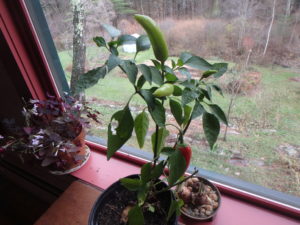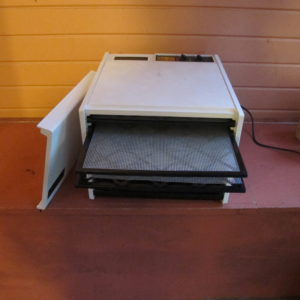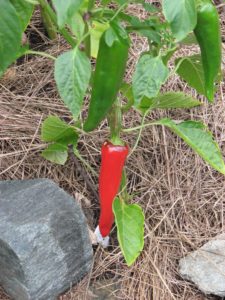It’s Time to Think about Hot Peppers
I love hot and spicy peppers. As a young man I lived in West Africa for nearly 10 years, first as a traveler, then as a Peace Corps volunteer and Peace Corps Country Director. I lived in Cameroon and Mali where hot peppers were an integral part of the diet. If peppers are hot enough, they make you sweat – which cools you down. That’s good, as most African villages didn’t have electricity back then for fans or air conditioning.
Hot peppers are rated in Scoville Units to give you an idea of how hot they are. They are named after Wilbur Scoville, an Englishman who tested peppers in the early 1900s. In my first book, Notes from the Garden, I wrote, ”I like to imagine him serving little tea sandwiches to proper English lords and ladies, but with peppers beneath the watercress. Did he measure heat by face color or expletives?” I imagine he actually measured capsaicin content as it is the compound that gives peppers their kick.
Hungarian wax peppers, my mildest hot peppers, are rated for 300-700 Scoville units. Jalapenos and Cayennes run 3,500 to 6,000 units, while Habaneros can reach 200,000 to350,000 units. Be sure to wear glove if you handle very hot peppers – a little of the oil or a speck of dust in the eye (or another sensitive area) can be very painful. I’ve read that the more stressed a pepper is, the hotter it is – hence the range for any variety – I find they vary considerably from year to year.
I dry most of my hot peppers in a food dehydrator so that I can grind them into a powder to add just a little bit to a dish. I use my coffee grinder to do that, after I have dried them until they are brittle. That makes for an interesting cup of java, too, after I’ve ground the peppers.
Most hot peppers would rather be growing in Mexico or southwest France than in New England. They like plenty of sunshine and consistently hot temperatures. They don’t like heavy wet clay soils – so when planting, amend the soil, if necessary, with compost to lighten it up. But never add fertilizer to peppers. If you do, you will get big leafy plants, but few peppers. That’s true for sweet peppers, too.
I have a friend, Brian Steinwand, whose mouth must be made of leather. He can eat habanero peppers (one of the hottest kinds) like they are candy. He touts their fabulous flavor, but for most of us that flavor comes with too much heat to be pleasant.
This year I discovered a habanero that allegedly comes with all the flavor, but much less heat. It’s called “Roulette” by Johnny’s Selected Seeds, and is touted to have “a sweet, floral flavor without the traditional fire we expect from a habanero.” Of course that name makes me wonder if a few of the fruits will have the bite of a real habanero.
My favorite hot pepper is the “Espellette” pepper from southwest France. Like champagne, the name is controlled by the French government, and these peppers are only supposed to be grown in 11 specific villages. But the peppers are readily available in the Bordeaux region, and I’ve discovered that seeds saved from them can produce great peppers even in New England. Last year mine did not produce well as I started the seeds too late, I think. Or perhaps the weather was wrong.
Each year I like to try new varieties of the vegetables I like. Along with Roulette, a pepper I shall try this year is called “Amazing 2”, also from Johnny’s Seeds. According to the description in their catalog, this is a thick walled pepper, and needs a dehydrator to dry it. It is a traditional Korean drying pepper, and is said to be good for making kimchi, but has a lower heat rating than most. It’s said to be warm, not hot.
Like Roulette, Amazing 2 is a hybrid pepper, so I will not be able to save seeds. Hybrids are created by crossing 2 parents of different genetic makeup. But their seeds don’t breed true, so you have to buy new seeds when you use them up. But even a small packet of seeds will produce plants for 2 or 3 years if you only want a few plants. I find most seeds are viable for 3 years.
One nice thing about growing peppers is that they are sociable. By that I mean, they like to hang out together. Most peppers like to actually touch leaves with other peppers when the plants are mature, so I plant them just a foot apart – so they don’t take up much garden space. Of course if you plant 2 or more varieties, they will hybridize, so I don’t save seeds – who know what I would get. In years when I grow Espellette peppers and want to save seeds, I grow no other peppers anywhere in my garden, hot or sweet, to keep the seed line pure.
January is too early to plant any seeds, but I enjoy reading the seed catalogs or web sites, and ordering early. And before too long, it will be time to start them indoors. Meanwhile, I think I’ll go make a hot winter stew. Hot with peppers, that is!
Henry can be reached at henry.homeyer@comcast.net.





